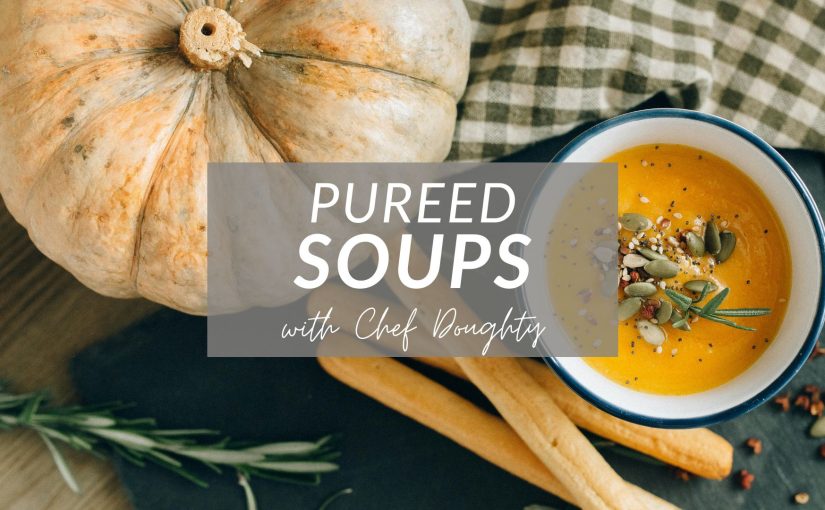As autumn arrives, bringing with it a bounty of root vegetables and gourds, the art of pureed soup truly shines. Imagine the earthy sweetness of roasted butternut squash blended with a hint of apple and ginger, or the comforting depth of parsnip and pear soup with a touch of sage. These flavorful combinations, often enhanced by aromatic spices and a creamy finish, offer a delightful way to capture the essence of the season in a warm, inviting bowl.
A pureed soup can and should be just as delicious as a brothy soup made with meat and vegetables. It takes, perhaps, a little more forethought to ensure that there is enough complexity in the flavor, since there will not be visual complexity. That is why many pureed soups are garnished with a crunchy topping and perhaps a drizzle of cream or minced fresh herbs. Those “finishes” add appeal when presented. With all this in mind, following are some tips for pulling off an award-winning pureed soup.
1. Most pureed soups begin with cooked vegetables. Those vegetables can be boiled or steamed or sauteed or roasted. Sauteing and roasting will provide greater flavor and perhaps a darker, richer color. Whatever cooking method you use on your vegetables, be careful to cook them just to the point of doneness, not overdone and mushy.
2. Typically, these soups have an aromatic component which is composed of onions, garlic, maybe ginger, perhaps celery and other aromatics that are cooked separately in a saute pan with a little oil or butter. These are cooked till tender and then set aside until ready to puree.
3. You will need a thinning liquid to help as you puree in the blender and to ultimately get the desired consistency for the soup. This thinning liquid can be water or the cooking liquid used in cooking one of the vegetables; it can be store-bought broth, milk or half-and-half, even fruit juices.
4. Use either a blender or food processor for best results. If using a blender, puree the base vegetables in several batches, using just enough thinning liquid to get the vegetables moving in the blender cup. Be careful not to add too much liquid initially, just enough to move things around and puree chunks into a smooth base. If using a food processor, you may not need to add any additional liquid while making the cooked vegetables smooth. Always test it without at first, and add only when needed. You can always add more liquid once the soup ingredients are brought together and heated on the stove (see photo, right page, top right).
5. Make sure you taste your soup as you are making it. Every soup will need to be tasted for salt and pepper but go beyond that. This is an opportunity to really engage your taste buds with your mind and figure out what else might be missing. Is it sweetness? Is it acidity? Heat? Always, taste as you go.
6. Provide a “topping” for the soup. Because a pureed soup is predictable in its texture, it helps to garnish the soup with a contrasting color and crunch. This can be nuts, croutons, toasted coconut, crushed cookies, etc. Included in these toppings can be a freshly minced herb, which will add a striking green color (see photo, bottom right). These topping ingredients should be added at the moment of service to preserve maximum effect in texture and color.
Meet Chef Doughty

We know her as part owner of Silvercreek Realty Group and the smiling face behind the brokerage accounting department, but did you know that Joyce Doughty has an affinity for culinary arts?
Chef Doughty is a successful food writer and restaurateur who hosted the nationally syndicated daily Public Radio food program “Food for Thought” for 17 years and was also host of the local ABC affiliate morning program “In the Kitchen” highlighting practical recipes and techniques for the kitchen. Recipient of the James Beard Foundation Top Three Chefs in Idaho Award and owner and chef of Idaho’s critically acclaimed Doughty’s Bistro. Chef Doughty was trained at Le Cordon Bleu and received her executive chef certification from the American Culinary Foundation.
